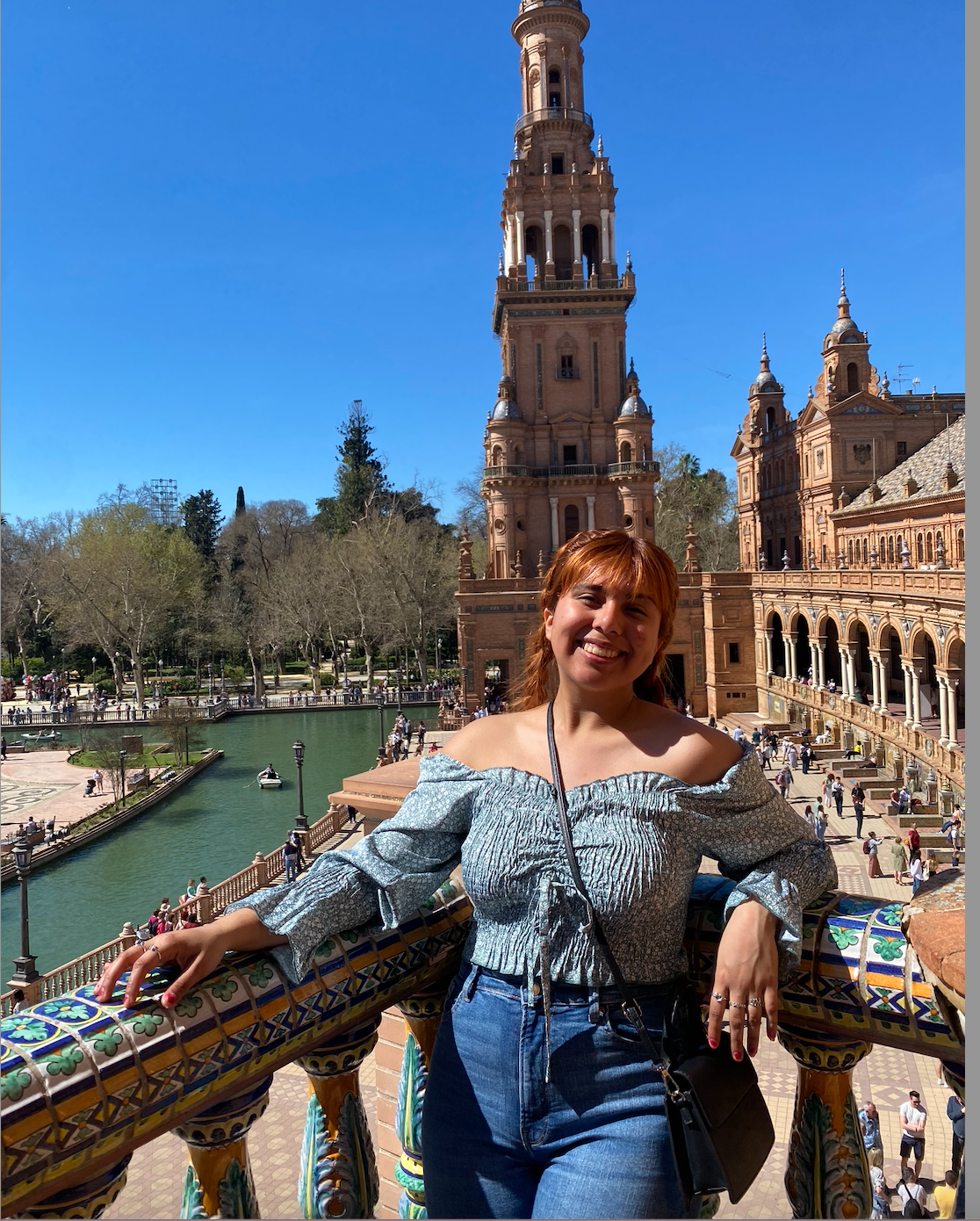
Hola!
A few weeks ago, I had the opportunity to not only attend a flamenco show, but also participate in a dancing class. The flamenco show took place in Sevilla, a city in Andalucia. Visiting this southern part of Spain gave me the opportunity to compare this region with other regions I have visited and even with the city I am living in. Just like there are a lot of similarities across Spain, there are also some differences.
I’ll mention a few before I continue my flamenco experience. One of the differences I noticed was the warmer weather of the south. Being from the south of the United States myself, I have to admit I missed the heat. Where I currently live, it is just starting to get warmer, but for the past few months the weather has mainly been cold, with a few days of warm sun. Another difference I noticed was a slight difference in accents. It reminded me of how in the USA, we also have differences in accents. For example, people from the south might have a different pronunciation from those from the north, even when we speak the same language. Seeing this across different regions in Spain is something I expected, since I think that this kind of variability exists everywhere, but it was still pretty nice to experience it since I wasn’t sure what it would sound like. Another thing I noticed was the difference in architecture. In my opinion, southern Spain has more colorful features. Also, you can see the influence of the “mudejar” architecture. The mudejar style refers to the muslim influence on decoration in christian kingdoms. Additionally, I noticed that a lot of the houses were white and had more of the typical “spanish style” look that, at least for me, was what I imagined when I thought of Spain. One of our guides mentioned how this was the main style that was exported abroad. That being said, I think it is important to note that every region has its charm, and that there is beauty in the diversity.
Well, now going back to my flamenco story, I think that this is another part of the culture that was exported abroad. At least in terms of it being well known. During both the show and class, I learned that the term flamenco not only refers to the dance, but also to the songs and music, the culture. Before learning this, I thought flamenco was just the dance style, but now I see it as more like an overarching term, a form of art that is part of Spain’s culture. It is prominent in the south of Spain. I loved being able to see a show in person and enjoy the atmosphere created. It was full of energy. I was amazed to see how much music you can create just with your hands, feet, voices and a guitar. I also loved seeing the clothing that the dancer wore. Additionally, I learned that there are different “palos” of flamenco. The term palo refers to the different musical forms that exist in flamenco. These can include forms such as “sevillanas”, “tangos”, and “bulerías”. Not only was I able to see different palos, but I was also able to learn some of the basic steps for them during the dance class. Being able to participate in these cultural activities was fun. It gave me the opportunity to learn about Spain’s culture and become more knowledgeable about things I only knew about at a surface level.

